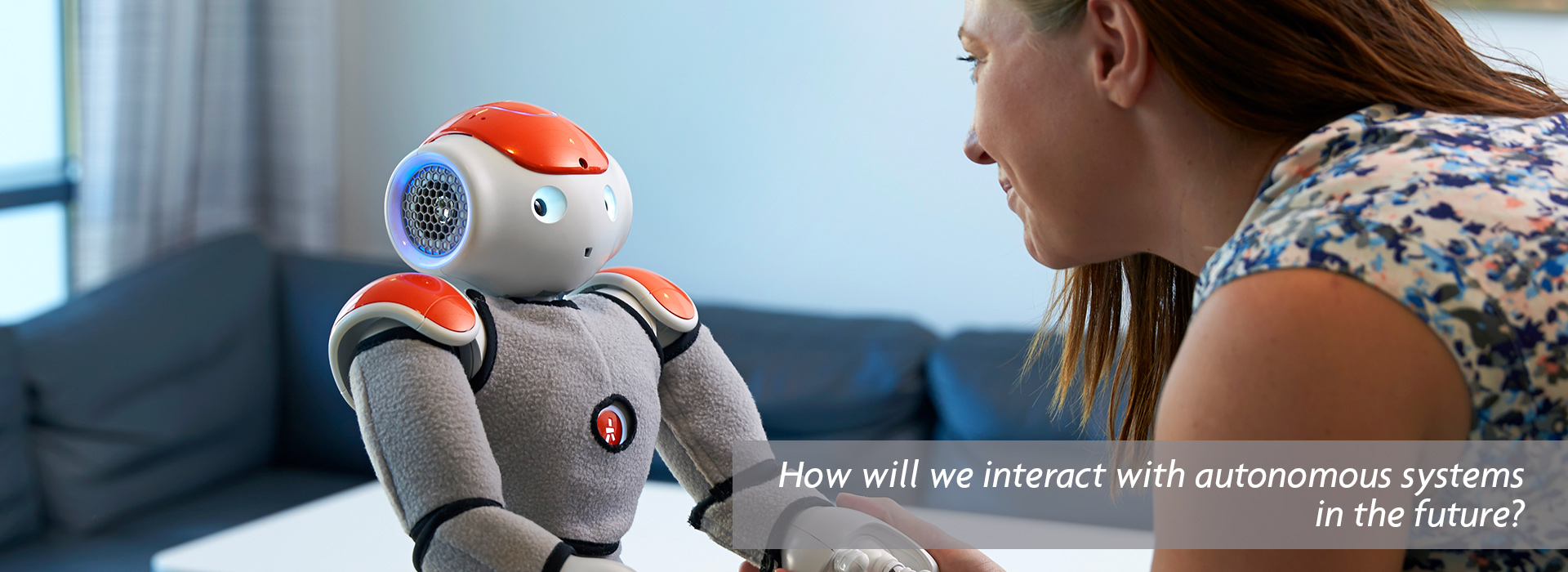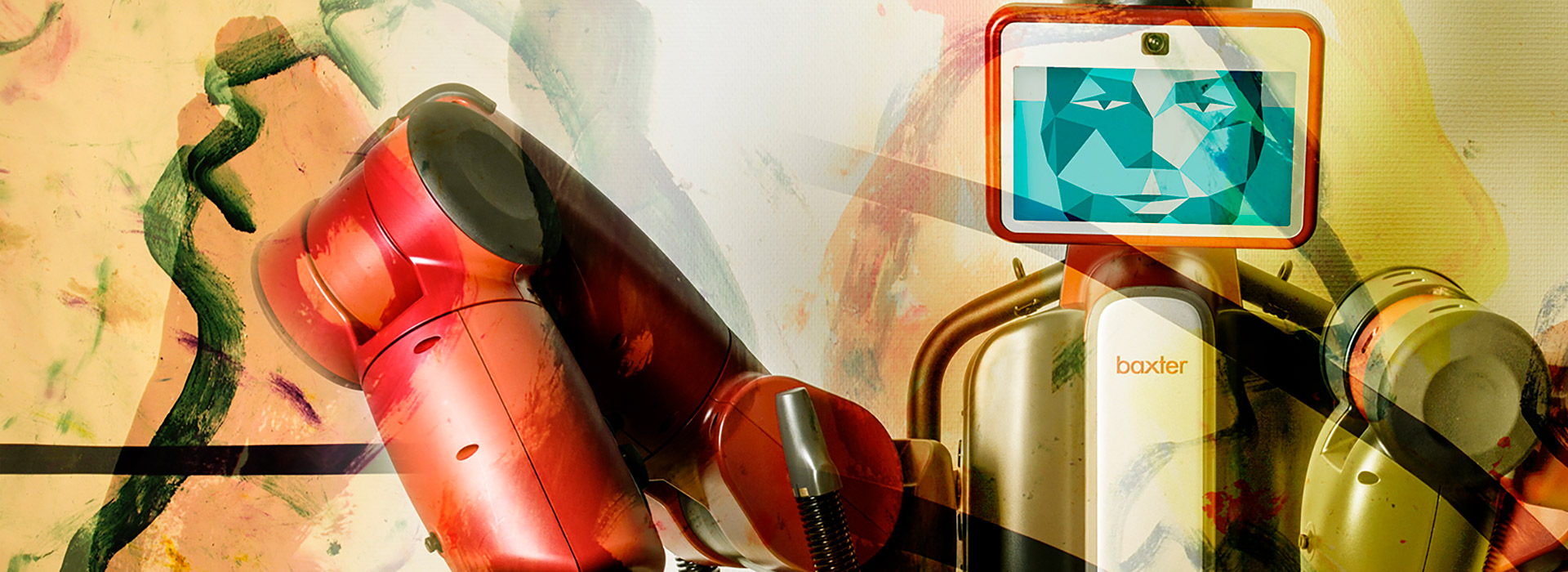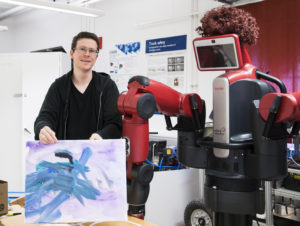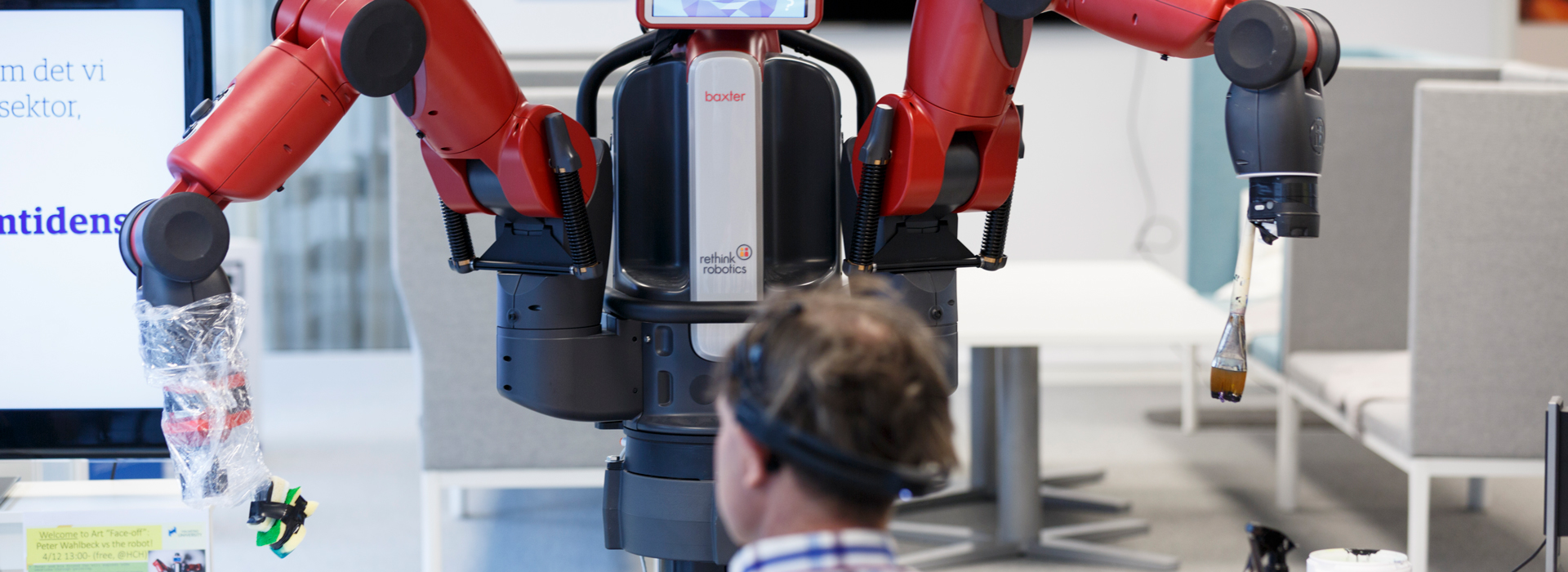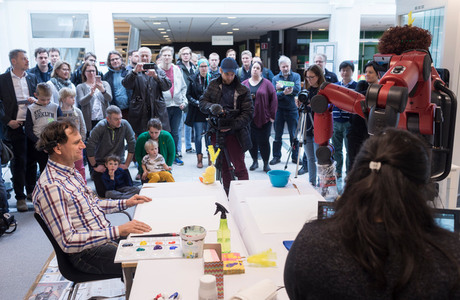Social robots that in various ways are able to interact and relate to humans are trending. At the University of Skövde, there are currently several research projects where researchers are studying how the skills of social robots can be put into use. For example within the industry. On May 15th 2018, Pepper, the University of Skövde’s robot and an eight year old girl Rut opened one of Sweden’s largest industry trade fairs. They cut the ribbon together, as a symbol of next generation’s industry coworkers.
Pepper was invited to Elmia Production Fair on May 15-18 to open the event, and was described as “the latest within technology and industry”. Together with his colleagues, Erik Billing, lecturer in Information Technology at the University of Skövde, has programmed Pepper’s movements and expressions.
– Pepper and eight year old Rut opened the fair by untying a ribbon. Afterwards, Pepper was available for visitors who wanted to say hello and learn more about social robots, and our various research projects in this field at the University of Skövde, says Erik Billing, and he also mentioned the various applications of the robot beyond acting as an opening speaker.
Studying the human-robot interaction in various fields
In the research project AIR, a joint effort with the RISE research institute, Örebro University and Halmstad University who receive funding from the KK-foundation, the University of Skövde is studying how robots can interpret and interact with various autonomous systems. Some areas that are being studied in addition to social robots are industrial robots and autonomous systems for traffic, that is driver-less cars.
– By studying these three areas, we are hoping to gain a better understanding about how humans react and interact with the three systems. Our goal is to create a tight collaboration between humans and robots, where the robot is able to adjust to human actions and intentions. For the industry, we hope that this will open up for new ways of producing goods while contributing to a better work environment for machine operators.
The development of social robots such as Pepper has just begun, and the fields of application will most likely expand in the future, says Erik Billing.
– Technology from social robots, like how they establish eye contact, process human speech or gestures, is likely to be very important for the future of industry.

